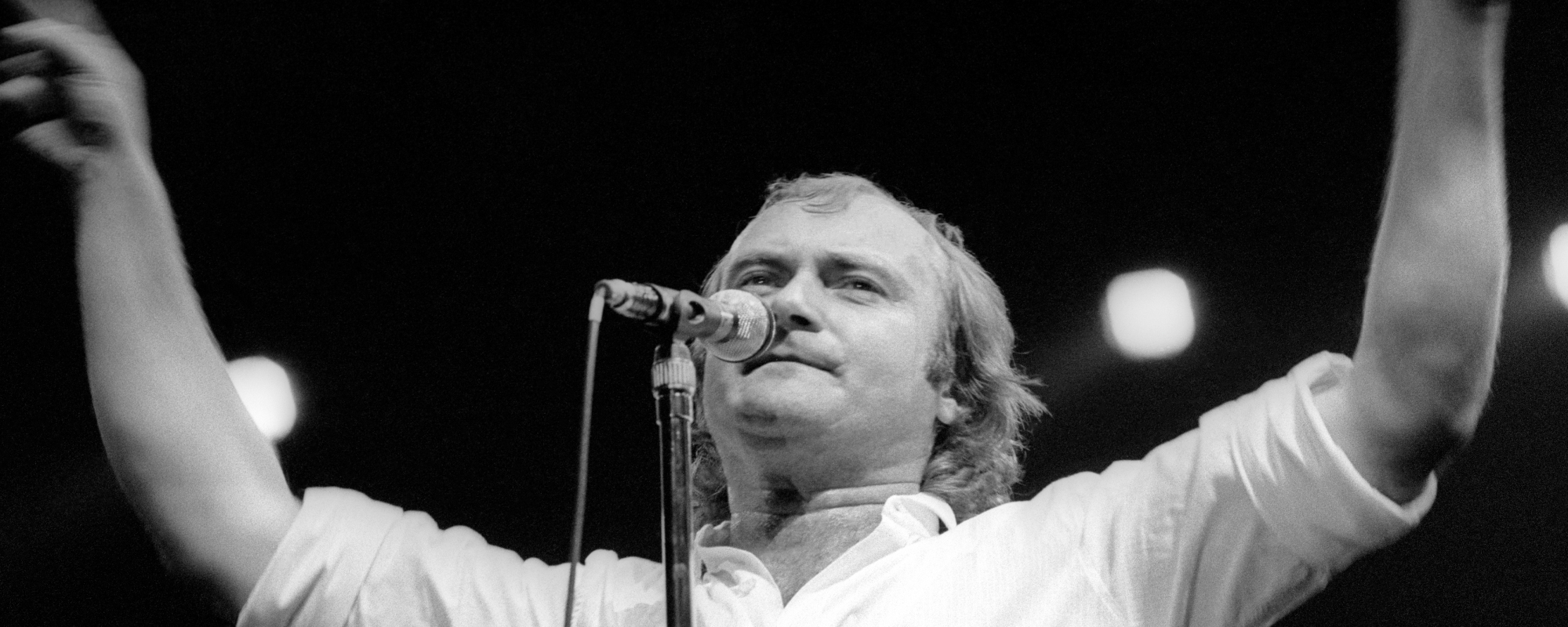When Peter Gabriel split from Genesis in 1975, it would have been hard to imagine the massive commercial success he would have in the ‘80s and beyond. It wasn’t until Gabriel’s fifth album, So, released in 1986, that he became a household name, but all of his albums are worth exploring, regardless of their popularity. In fact, Gabriel’s albums have been so consistently good that it’s not easy to rank them. But rank them we will. Gabriel’s quality work extends to his soundtrack and covers albums, too, but this set of rankings will pertain to only his studio albums with original material.
Videos by American Songwriter
8. Peter Gabriel 2
Gabriel’s least-good album is still a very strong effort. The one-two-three punch of the album’s opening tracks—”On the Air,” “D.I.Y,” and “Mother of Violence”—are on a par with any other three-song run in his discography. The rest of the album is more uneven, though tracks like the spare, funky “Exposure” (co-written with Robert Fripp) and “Flotsam and Jetsam,” with its country and jazz flourishes, show a range that Gabriel wasn’t able to express within the confines of Genesis.
7. Us
The follow-up to Gabriel’s breakthrough, So, is less energetic and more contemplative than its predecessor. “Steam” is a soulful, horn-laden jam, much like So’s “Sledgehammer,” that deserved more acclaim. Us begins with a rousing opener, “Come Talk to Me”—one of two songs on the album that features backing vocals from Sinead O’Connor—and it finishes in epic style with “Secret World.” The album’s pace plods at times, but there are plenty of highlights to make it worth digging into.
6. i/o
i/o was 28 years in the making and was released more than 21 years after Up. It’s much heavier on orchestral arrangements than Gabriel’s previous albums with original material, which is a carry-over from his two albums from the 2010s (Scratch My Back and New Blood) where he refashioned previously recorded songs as orchestral works. These arrangements are most effective on “Playing for Time” and “Live and Let Live,” both of which build to a dramatic conclusion. It’s not an album to spin if you’re looking for radio-friendly hits, though to be fair, “Olive Tree” is one hell of an earworm. Just be sure to set aside some time to listen to i/o, which runs over an hour (and that’s not taking its three separate mixes into account).
[RELATED: Peter Gabriel Warns About A.I. in Music, Says It’s “About to Turn Our World Upside Down”]
5. Up
Though it’s a muscle that Gabriel has flexed more as a solo artist than with Genesis, he has always been able to write achingly exquisite melancholy songs. When listening to Up, have plenty of hankies on hand. The lyrical focus is largely on aging, dying, and grief, and Gabriel’s penchant for expressive vocalizing and writing songs with dramatic build-ups maximizes the emotional mileage he gets from these themes. Between the visceral gut-punch of “Darkness,” the pathos of “No Way Out,” and the fragile beauty of “The Drop,” Up is a thoroughly satisfying emotional roller coaster.
4. Peter Gabriel 1
Genesis fans looking for a familiar sound were likely reassured by the opener on Gabriel’s debut, “Moribund the Burgermeister,” with its medieval-themed lyrics and grand chorus, but the album quickly charts a different course. “Solsbury Hill,” a song about Gabriel’s departure from Genesis, is folky in a straightforward way. “Excuse Me” features a barbershop quartet, a tuba (played by bassist Tony Levin), and a banjo (played by Fripp). “Waiting for the Big One” is straight-up blues. For all of its quirks, Gabriel’s first album is most notable for the volume of songs that still hold up decades later, including “Modern Love,” “Here Comes the Flood,” and, of course, fan favorite “Solsbury Hill.”
3. So
So is a powerhouse album that deserves every ounce of its popularity. The pop appeal of “Sledgehammer” and “In Your Eyes” is undeniable, and every big-name guest, including Kate Bush, Laurie Anderson, Youssou N’Dour, Stewart Copeland, Nile Rodgers, and Jim Kerr, makes an important contribution. While So is remembered for its big hit singles, it also includes “Red Rain,” one of Gabriel’s most powerful performances, and a pair of outstanding duets, “Don’t Give Up” (with Bush) and “This Is the Picture (Excellent Birds)” (with Anderson).
2. Peter Gabriel 4
Gabriel dramatically increased the range of his sonic palette on this album, largely due to ample use of percussion and a Fairlight CMI synthesizer. It was also his first digitally-recorded album, and it still stands as one of Gabriel’s best-sounding records. With “Shock the Monkey”—Gabriel’s first Top 40 hit—and “I Have the Touch,” we see first signs of his movement toward a more pop-oriented approach. Both are great compositions, but the album’s highlights are its slower-developing pieces, such as “Rhythm of the Heat” and “San Jacinto.”
1. Peter Gabriel 3
Not only are there no skippable tracks on Gabriel’s third album, but the songs flow together so well that it’s hard not to listen to it all the way through. It also reunites Gabriel with Phil Collins, who drums on five of the 10 tracks. The complete lack of cymbals adds to the album’s sinister, dark feel, and Collins’ performance on “Intruder” kicked off the gated drum craze that helped to define ‘80 pop music.
It’s hard to overemphasize how unique the sound of Peter Gabriel 3 was at the time of its 1980 release. “I Don’t Remember,” undergirded by Levin’s growling Chapman stick and drummer Jerry Marotta’s insistent pounding, didn’t sound like anything else on FM radio, but it was infectious enough to actually make it onto the airwaves. The haunting “Games Without Frontiers” was even more popular—it could very well be Gabriel’s best single.
Photo by Vinnie Zuffante/Getty Images












Leave a Reply
Only members can comment. Become a member. Already a member? Log in.